Policy: Permanent identification
Policy type: Policy
Status: Under review
Manual Reference: 4a
Date ratified: 17 September 2015
Please see the following guidelines relating to this policy:
- Guideline 1: Microchip technology for radio frequency identification of animals.
- Guideline 2: Database storage of microchip information for animals.
- Guideline 3: Freeze branding of dogs.
- Guideline 4: Freeze branding in cattle.
Policy
The NZVA supports methods of animal identification that cause minimal pain and damage, with use of analgesia and/or anaesthesia as appropriate. Microchipping, ear tagging and ear-marking are the preferred methods of permanent identification. The NZVA does not condone the use of hot iron branding 1.
Explanation
Methods of identification include:
- Microchipping – the subcutaneous insertion of a uniquely-numbered, scannable chip – used in most companion and wild (including captive) animals. Reading is not possible from a distance and requires specialised equipment.
- Ear marking 2 – removal of a distinct portion or pattern of notches from the ear of an animal to designate ownership and/or status.
- Ear tagging 3 – insertion of a numbered plastic or metal tag through the external pinna. Some are readable from a distance (production animals).
- Tattooing – application under anaesthetic of a permanent readable identification directly onto relatively hairless skin.
- Hot branding – production of a superficial partial thickness skin burn resulting in a permanent scar, readable and particular, through application of a hot iron (Arab horses)
- Freeze branding - application of a freezing iron to produce either a superficial partial thickness skin burn resulting in destruction of the colour follicles of the hair shaft resulting in the hair growing back white.
- Leg or wing banding 4 in birds - placing numbered band around leg/on wing.
- Flipper-tagging in seals and sea lions
- Toe clipping in native reptiles.
1 Hot iron branding may be appropriate with appropriate pain control for wild animals such as pinnipeds.
2 Ear marks can be spoilt by subsequent trauma to the pinna.
3 Ear tags are not necessarily permanent as they can be torn out.
4 Wrongly-sized leg bands can damage the leg especially as bird grows.
Section 29(f) of the Animal Welfare Act 1999 states that a person commits an offence who “brands any animal in such a manner that the animal suffers unreasonable or unnecessary pain or distress”.
The early problems of migration of microchips have been largely solved by the placement of anti-migratory coatings on the chips. Correct placement of the microchips also minimises the possibility of migration.
It is clear from both behavioural and physiological evidence (Lay, Friend et al. 1992; Lay, Friend et al. 1992; Schwartzkopf-Genswein, Stookey et al. 1997; Schwartzkopf- Genswein, Stookey et al. 1998) that branding is a painful procedure. It follows that branding should only be carried out if adequate anaesthesia and/or analgesia is provided.
There is also evidence of neoplastic cutaneous lesions forming in the skin at both freeze- and hot-brand sites (Yeruham, Perl et al. 1996; O'Toole and Fox 2003).
Therefore, while recognising the importance of individual identification of animals for a variety of purposes, the NZVA prefers that, with alternatives such as ear-tagging, ear- marking and microchipping available, methods are used that do not involve branding. Given the advances in the technology of micro-chipping, this method of identification is likely to become increasingly accessible and cost-effective.
Guidelines
- Veterinarians should discourage clients from using branding as a form of identification.
- If branding is to be used, animals should be provided with adequate analgesia and/or anaesthesia.
- Veterinarians should ensure that microchips are implanted in accordance with the following NZVA Guideline 1: on Microchip Technology for Radio Frequency Identification of Animals.
- Veterinarians should ensure that microchip data is registered with an appropriate authority in accordance with the following NZVA Guideline on Database Storage of Microchip Information for Animals. Veterinarians should record the microchip number on the clinic records of the implanted animal.
References and further reading
Lay, D.C. Jr., T.H. Friend, C.L. Bowers, K.K. Grissom and O.C. Jenkins (1992a). A comparative physiological and behavioral study of freeze and hot-iron branding using dairy cows. Journal of Animal Science, 70: 1121-1125.
Lay, D.C. Jr., T.H. Friend, R.D. Randel, C.L. Bowers, K.K. Grissom and O.C. Jenkins (1992b). Behavioral and physiological effects of freeze or hot-iron branding on crossbred cattle. Journal of Animal Science, 70: 330-336.
Lindegaard, C., Vaabengaard, D., Christopheren, M.T., Ekstøm, C.T., Fjeldborg, J. (2009). Evaluation of pain and inflammation associated with hot iron branding and microchip transponder injection in horses. American Journal of Veterinary Research, 70: 840-847.
O'Toole, D. and J.D. Fox (2003). Chronic hyperplastic and neoplastic cutaneous lesions (Marjolin's ulcer) in hot-brand sites in adult beef cattle. Journal of Veterinary Diagnostic Investigation, 15: 64-67.
Schwartzkopf-Genswein, K.S., J.M. Stookey and R. Welford (1997). Behavior of cattle during hot-iron and freeze branding and the effects on subsequent handing ease. Journal of Animal Science, 75: 2064-2072.
Schwartzkopf-Genswein, K.S., J.M. Stookey, T.G. Crowe and B.M.A. Genswein (1998). Comparison of image analysis, exertion force, and behavior measurements for use in the assessment of beef cattle responses to hot-iron and freeze branding. Journal of Animal Science, 76: 972-979.
Yeruham, I., S. Perl and A. Nyska (1996). Skin tumours in cattle and sheep after freeze- or heat-branding. Journal of Comparative Pathology, 114: 101-106.
